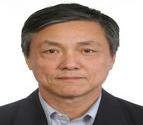The Korean Peninsula witnessed even more instability and turbulence in the year 2016, compared with previous years.
The Democratic People’s Republic of Korea has sped up the development of weapons of mass destruction. It conducted two nuclear tests and dozens of missile tests within one year, including about seven ballistic missile tests and one sub-launched test. As Kim Jong-un openly declared in his 2017 New Year Address, “A historic transition was achieved in strengthening the DPRK’s defense capabilities last year and the country has become a nuclear power and military power in the East that no powerful enemy dares to touch”. The DPRK’s moves resulted in the adoption of two UN Security Council resolutions within one year containing the most stringent sanctions, making the external environment for DPRK extremely detrimental. In addition to the resolutions, the United States, Japan, the Republic of Korea and the European Union stepped up their unilateral sanctions against the DPRK. Even Russia, a friendly neighbor, issued a new sanction order based on the UN resolutions, signed by President Vladimir Putin himself.
In the south, the ROK insisted on bringing in the THAAD system from the United States in disregard of the strong opposition from China and Russia. Such move has escalated the North-South military confrontation and led to strategic instability in the region. Consequently the ROK’s relations with China and Russia reached a low point, while United States’ divide with China and Russia over anti-missile system becoming even more acute. Yet the greatest impact on the ROK and the North-South relations is delivered by President Park Geun-hye herself. The corruption scandal involving her close confidante polarized Korean society, and triggered impeachment of the President. What is more, the crisis dragged the ROK, which is already struggling with both domestic and foreign complexities, into a “policy-making vacuum”. It is at this critical point that Park Geun-hye ordered to speed up the deployment of THAAD and relaunch the negotiation of the intelligence-sharing agreement with Japan, in an effort to shift public attention. What she has done makes the situation even more complicated, adding greater uncertainties to the ROK’s major policy choices. Moreover, the ROK increased its Hyeonmu missiles and sea and airborne striking capabilities against its northern neighbor. The two sides have spared no effort in stockpiling deadly weapons, making the Peninsula the place with the most concentrated arsenal in the world.
What is regrettable is that such chaotic scene of risks and uncertainties will continue in 2017, in a more complex fashion.
The DPRK will certainly test its first intercontinental ballistic missile capable of carrying nuclear warheads in response to the new round of large scale US-ROK joint-military exercises in 2017. A nuclear-armed DPRK with the ability to strike the other side of the Earth will be a tough challenge for President-elect Trump, who once expressed willingness to “share sandwiches” with Kim Jong-un. This will naturally leave DPRK-US relations and even the security on the Peninsula to a dangerous gambling game.
This being said, Pyongyang sent out a signal of improving North-South relations as a balancing act at the start of the New Year, and even asked for easing military tensions. When Park Geun-hye was in crisis, the DPRK maintained a rare calmness, refraining from conducting intercontinental ballistic missile test and giving no chances to the embattled president to shift public focus. Yet the DPRK might strangle its own proposal to improve North-South relations by conducting the intercontinental missile test this year. During the “policy vacuum period” and amid uncertainties caused by impeachment as well as an early election in the South, a new round of negative interactions between the North and the South might be kicked off by the missile test, which will turn the rapprochement proposal by Kim Jong-un into a benign vision at most.
Pyongyang reminded policymakers in Washington with its nuclear test in 2009, the first year of the Obama presidency, to place strategic importance on the country. Now that it is the first year of President Trump, he might get a reminder from the DPRK’s intercontinental missile. Yet the “importance” that President Trump and his team attaches might be a far cry from what being expected by the North. The new wrangling between the United States and the DPRK, coupled with the competition between North and South over the security dominance on the Peninsula, will gradually turn the place into an explosive powder keg in the region.
The chaos on the Peninsula is no longer a crisis or turmoil in normal sense. The complex and fast-evolving developments have shown that the security situation since the signing of the Armistice Agreement has entered a period of historic and structural change. The key variable concerning such change is whether and how denuclearization could be achieved on the Peninsula and the determining factor being what kind of permanent peace regime for the Peninsula could be established.
The Korean War has left China with a regime of bilateral military alliance treaties between United States and Japan, ROK, the Philippines, as well as Taiwan, part of the Chinese territory. Such a regime poses a heavy strategic check on China even today. The future evolution of chaos on the Korean Peninsula will certainly have a direct and far-reaching impact on the security environment of China. This is why China, at this critical period, strongly requests and upholds the principle of “no war, no chaos and no nuclear weapons” on the Peninsula. China will take even more strong and proactive actions to achieve this goal, in an effort to guide the situation on the Peninsula towards enduring peace and denuclearization.



